After a multi-year period of contraction, the oil and gas business is on an upswing and back in action.
Recovering onshore activity in the U.S. is already boosting demand for oilfield services and analysts expect that recovering markets outside the U.S. will add to the momentum.
Already, the rise in crude prices boosted revenues 15.1 percent at Schlumberger and 47.7 percent at Halliburton in Q4 2017 alone, according to the research firm BMI. The business press is full of stories about labor shortages in the wake of severe cutbacks three years ago.
|
A well-designed network
keeps remote rigs and
exploratory vessels
connected and their
operations safely in sync.
|
The increase in drilling and production will drive greater demand for the connectivity on which
the modern wellhead depends. The industry’s recent experience with crisis has driven many firms to increase their use of digital technologies to drive greater productivity.

Communication service providers are expected to play an important role in helping the industry accelerate the shift to the digital oilfield, where connectivity allows secure, real-time collaboration and the use of data analytics.
The research firm NSR forecasts that the oil and gas business will spend a billion dollars per year on satellite connectivity alone in 2027, up from US$700 million in 2017. Demand will be greatest in the Atlantic Ocean Region, North America and Europe.
This article explores how expanding upstream operations can make the best use of all forms of communication to deliver the high-productivity, safety and reliability that oil and gas companies demand.
The Connectivity Challenge
Upstream operations in oil and gas rely on a mix of communications solutions for efficient production, safety, site security and remote connection to enterprise services.
They also turn to communications for the internet access and video content that support the morale and retention of crew members.
Whether on land or sea, however, those operations are typically in remote locations beyond the reach of ground-based networks or poorly served by local providers. It falls to the company to provide the services that are needed for efficient operations and for connectivity to the outside world.
There are two fundamental communications requirements: backhaul communications to the enterprise network, public switched telephone network and the internet; and onsite communications connecting workers and, increasingly, equipment that is part of machine-to-machine networks.
Backhaul Communications
Connectivity to remote sites may be achieved in several ways, including satellite, terrestrial microwave, fiber and, increasingly, LTE.
A subset of these approaches or all of these approaches may be used over the lifetime of the site. This type of backhaul communications is critical for keeping the site connected to the corporate network, for site management activities, for supply chain management, for site and worker safety, and for heavy equipment lifecycle support.
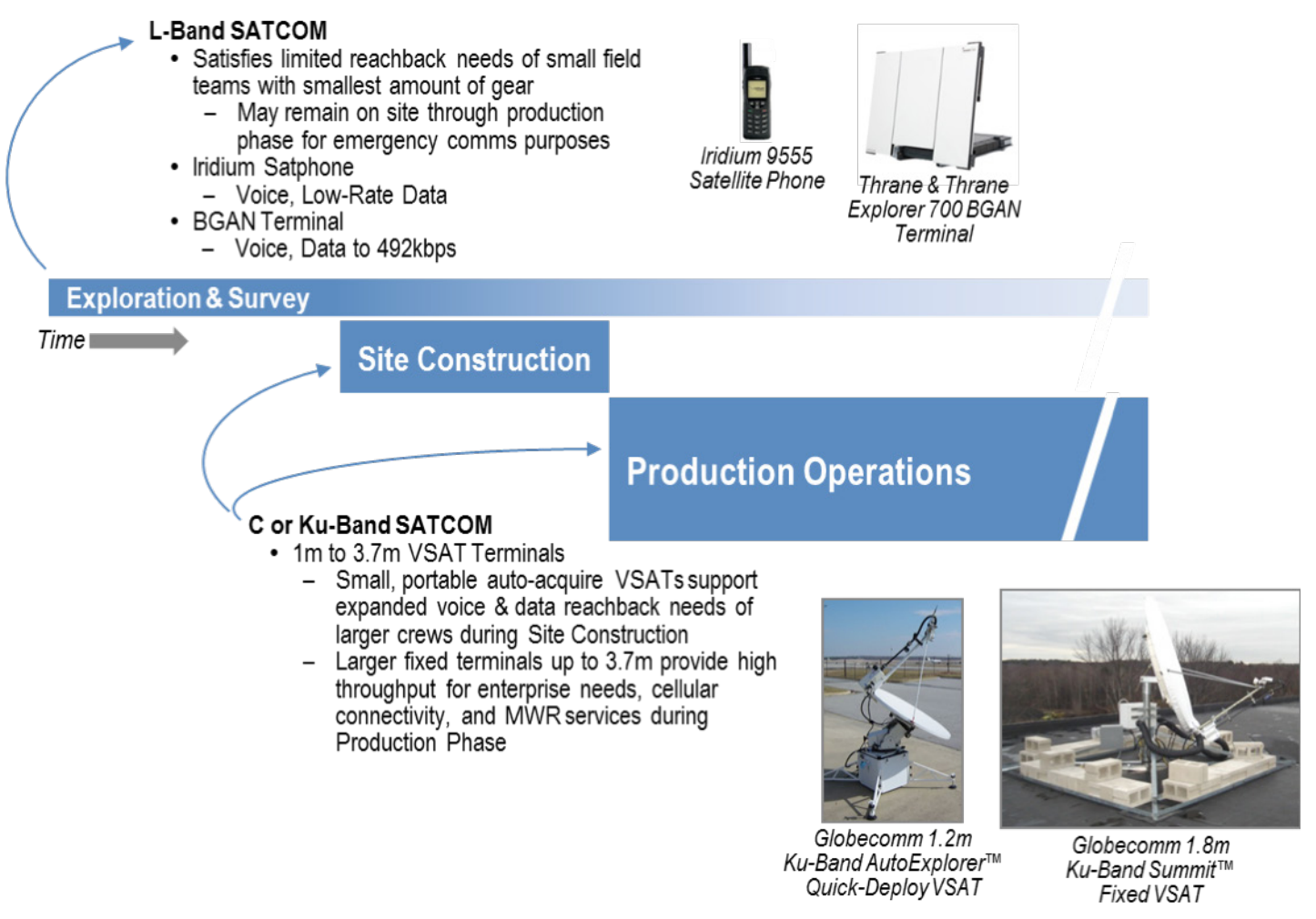 Figure 1. Use of Satellite for Backhaul During Exploration – Communications needs scale over time and so should the terminal and service approach. Timeline bar height conveys increase in net backhaul data rate in different phases.
Figure 1. Use of Satellite for Backhaul During Exploration – Communications needs scale over time and so should the terminal and service approach. Timeline bar height conveys increase in net backhaul data rate in different phases.
Satellite Backhaul
Satellite communications is typically the only practical way to connect a remote site to the outside world — especially during the initial exploration and production periods. Operators use dedicated satellite links with guaranteed data rates, as shown in Figure 1 below, to support communication needs.
At the outset, when exploration is under way, field crews may use satellite phones or small terminals that furnish voice and data services. Here, equipment portability and ease of set up and use are important.
The comparatively low data rates available from these small L-band frequency terminals suffice for the small field teams. Figure 1 shows Iridium satellite phones and Inmarsat Broadband Global Area Network (BGAN) terminals as the equipment of choice.
The figure shows that the L-band satellite solution may be practical over the life of the operation with use focusing on emergency or backup communications in later phases.
While L-band technology (Inmarsat, Iridium, Globalstar and others) answers many of the requirements, construction and operation typically demand higher-capacity and more cost-effective solutions.
While higher-capacity VSAT equipment cost more than the L-band terminals, users achieve significant operating cost savings over time, as the monthly recurring service cost per Kbps for the VSAT solution is much lower than for the metered L-band pricing.
Production involves a considerable increase in personnel on site, which boosts the number of users and applications that must be supported by the satellite connection. Portable, quick set-up terminals may be ideal for the start of production.
Here, “one-button” terminals, which automatically aim their antennas at the correct satellite and stay locked-on, are often the best choice. They offer multi-megabit per second (Mbps) capability without the need to dispatch a satellite field engineer to set up and operate the unit.
When site construction is complete, this type of unit can be repackaged in its ruggedized transit cases, stored and deployed to another construction site.
Figure 1 shows two types of Globecomm satellite terminals suitable for the construction and operations phases. Specific terminal design attributes (e.g., antenna size, power amplifier rating, etc.) are selected after thoroughly defining current and projected site communications requirements and conducting detailed communications link analysis for derived data rates.
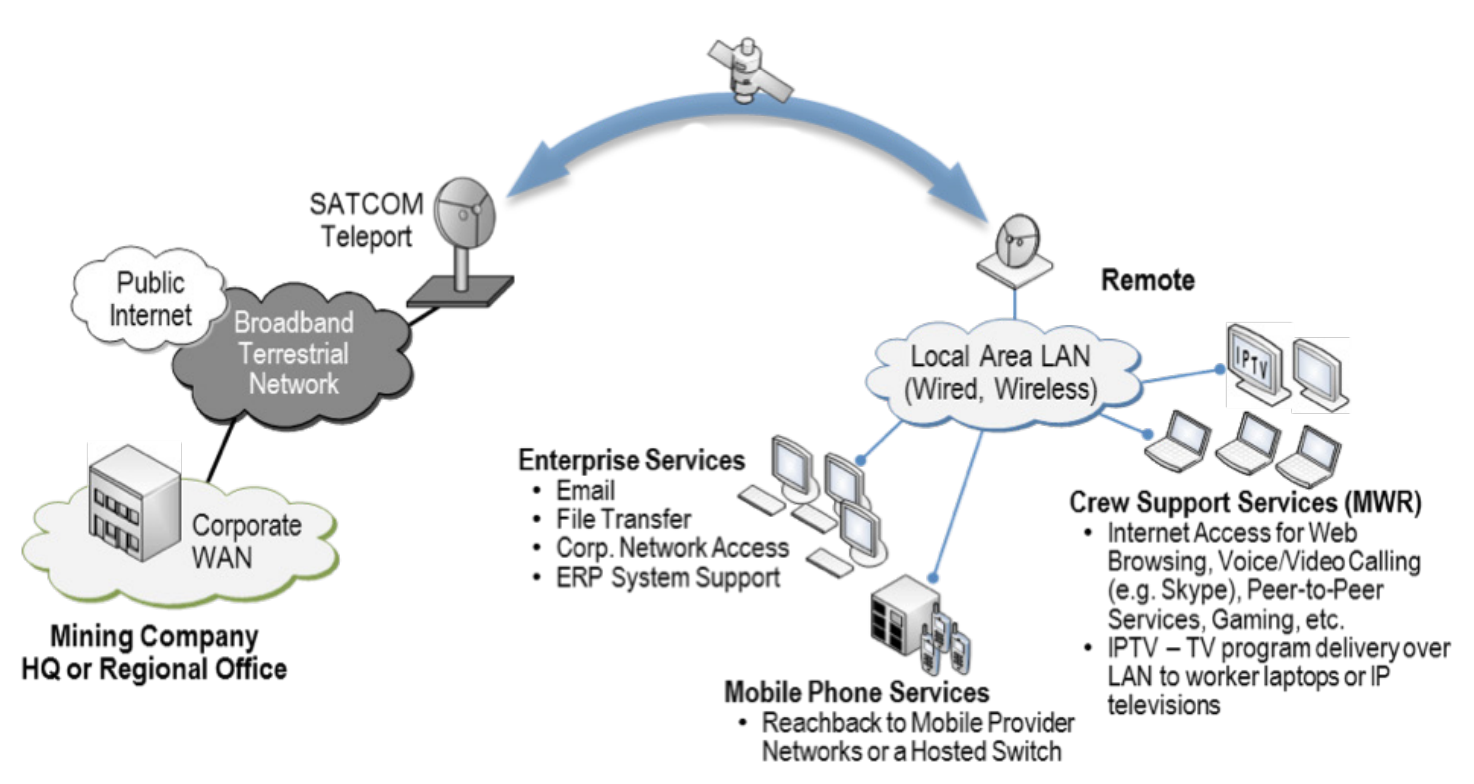 Figure 2. Satellite Backhaul Connectivity for Enterprise, Mobile Phone & Crew Support Services
Figure 2. Satellite Backhaul Connectivity for Enterprise, Mobile Phone & Crew Support ServicesBackhaul connectivity accomplishes multiple critical objectives. As shown by the blue arc in Figure 2 on the previous page, satellite backhaul provides enterprise, mobile communications and crew support services connectivity.
The combination of satellite communications and an interconnection to a global terrestrial network can also connect an exploration or energy company with its remote operations anywhere in the world
Connectivity to a drill site, rig or corporate WAN is then simply a matter of establishing connectivity to a local peering point via the Internet or leased line services. In most cases, this element of corporate connectivity already exists.
Satellite connects the remote site to the corporate network to support day-to-day business functions. Enterprise applications may include email, file sharing and transfer, access to specialized corporate applications, Internet access and enterprise resource planning (ERP) systems.
Workers at the remote end are connected to a wired/wireless LAN, which in turn connects via the satellite link with the distant corporate facility or WAN.
Where LTE mobile service is available, backhaul can combine satellite and cellular technologies to provide failover and least-cost routing, thus increasing performance and availability while minimizing overall communications costs.
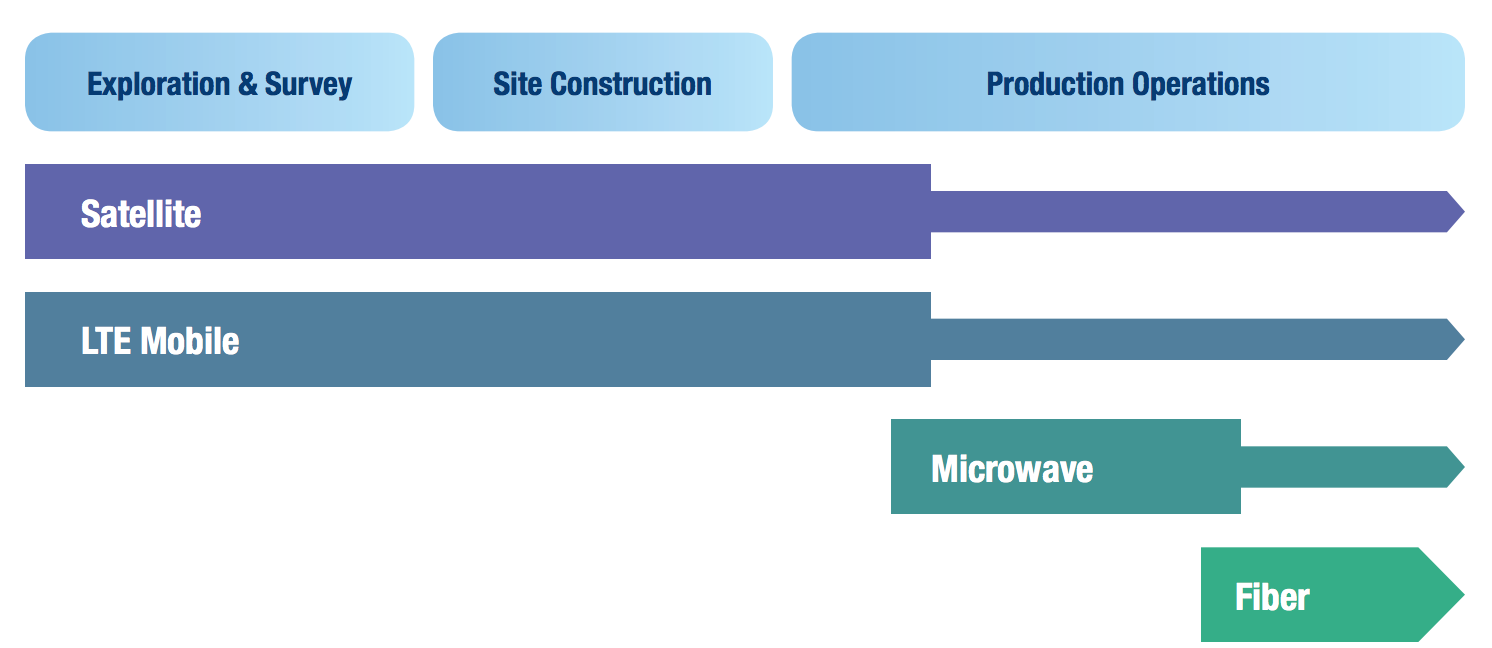 Figure 3. Notional Remote Site Backhaul Solutions Over Time.
Figure 3. Notional Remote Site Backhaul Solutions Over Time.
Satellite is also used to furnish internet access for workers who stay at or near the remote for extended periods. Internet access connects separated families through use of Skype and other VoIP calling as well as instant messaging.
Workers gain access to a wide range of news, entertainment, music and shopping sources when broadband connectivity is available. This has significant positive impact on crew morale and well-being. In this scenario, worker living quarters are equipped with a wired or wireless LAN and they can use their own or a company-issued tablet or laptop for Internet access.
With a satellite broadband link, it is also possible to provide Internet Protocol TV (IPTV). Here, TV programming is delivered to viewers over the housing facility LAN to set top boxes (STBs) in worker dormitory rooms and common areas.
From the STBs, content may be viewed on laptops, tablets, or IP-compatible TVs. IPTV service is particularly beneficial to workers stationed at remote locations for extended periods. Programming content can take the form of channel packages containing a mix of news, sports, movie, and network or cable TV programs, as well as video-on-demand options.
Cellular LTE
Satellite’s ability to provide coverage has no peer. However, LTE cellular has become increasingly popular in recent years. For land drilling applications, the higher network speeds offered by LTE are generally preferred, if available, despite the high metered bandwidth costs as compared to VSAT.
In some drilling regions, niche infrastructure-based LTE providers offer flexible billing options similar to managed satellite bandwidth. In most land drilling configurations, auto-deploy VSAT antennas are utilized for hot-standby failover from LTE, or as the primary method of backhaul when LTE is not available.
Microwave and Fiber Backhaul
Satellite is a viable backhaul approach, but it is typically more costly than microwave or fiber. While satellite can solve the connectivity problem from day one, communications infrastructure build-out by local providers over time may make lower-cost alternatives feasible.
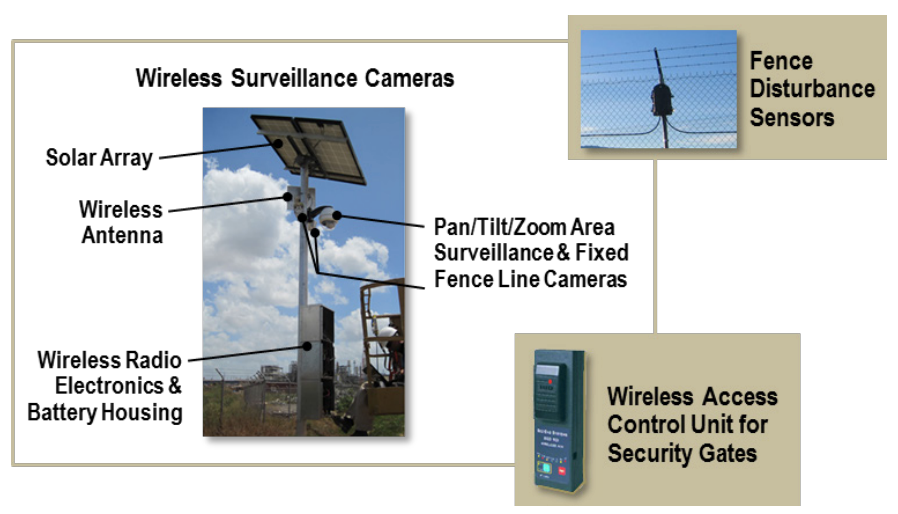 Figure 4. Typical Site Perimeter & Access Control Outdoor Elements Suitable for Wireless Connectivity to a Central Security Station
Figure 4. Typical Site Perimeter & Access Control Outdoor Elements Suitable for Wireless Connectivity to a Central Security Station
In some areas of the world, extensive microwave radio networks may ultimately reach an onshore site – or within range of a near-shore platform – if the economics to the network provider are favorable. In this case, a remote site operator would switch the bulk of its traffic from satellite to microwave to lower operating expenses. Some satellite capability may be retained for backup purposes in the event that microwave service is interrupted.
In a similar manner, if a local provider installs optical fiber in the area of the site, users typically transition from satellite or microwave to this lower-cost, higher-capacity alternative.
In highly developed markets, such as the U.S. Gulf Coast, optical fiber has become a standard means to provide connectivity to offshore platforms. Again, some degree of satellite or microwave service would usually be retained for backup and disaster recovery purposes.
Figure 3 illustrates a backhaul scenario where initial satellite service and LTE mobile, if available, is first supplanted by lower-cost microwave service. Thereafter, a transition to fiber takes place to again lower OPEX and/or to achieve higher communications throughput. Connectivity at any site over time may use a different mix of these technologies.
Onsite Communications
At an onshore or offshore exploration or production site, communications typically depend on a mix of wireless technologies, from WiFi and cellular to mesh radio networks, which combine voice, data and video to support the varied demands of remote sites.
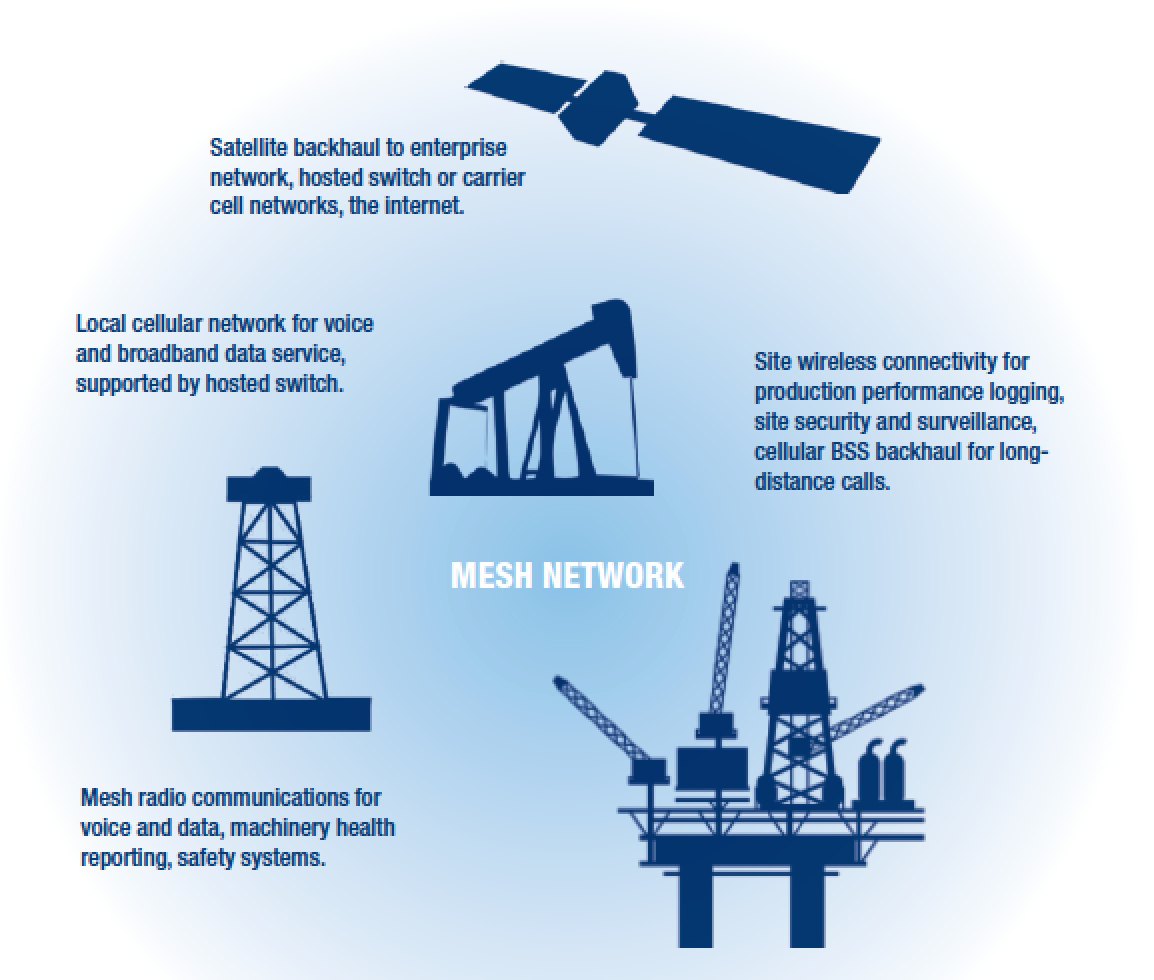 Figure 5.
Figure 5.
Wireless Communications
To keep crews and control rooms connected, oil & gas sites typically establish IEEE 802.11 WiFi networks, and WiFi can also provide the local area networks (LANs) within the site office buildings and in worker living quarters.
WiFi networks are also well suited for site security purposes where perimeter and onsite security cameras and access control systems relay information to a central guard station.
Figure 4 illustrates typical outdoor perimeter security sensors and access controllers that support this functionality wirelessly. This type of network can be easily secured to ensure the integrity and confidentiality of company information.
Onsite and Backhaul Cellular Communications
Upstream sites may be geographically remote, but they do not have to be cut off from the advanced communications services that power business and connect employees to the world.
Onshore wells have the option of deploying a specialized hybrid satellite-cellular (“SatCell”) solution that doubles as onsite and backhaul communications infrastructure.
The SatCell solution places equipment at the site that supports local calling and automatically hands offsite and long-distance calls to a
satellite link.
Offsite calls routed over the satellite are landed at a teleport and routed to the public-switched telephone network (PSTN). The power of this SatCell solution is that the satellite link, with its comparatively expensive satellite bandwidth, is only used for offsite calling. Onsite calls stay local.
Operators can fully integrate their sites into the global communications network with a remote hosted switching infrastructure that supports the full range of 3G and 4G LTE cellular voice and broadband data.
This infrastructure offers the same capabilities and complies with the same service requirements that govern the major cellular communications providers and it supports call routing to users on all provider networks.
Mesh Radio Communications
Personnel managing operations need reliable voice, video and data communications to optimize efficiency and production rates. These requirements can be met most successfully using a mesh wireless network approach.
A full mesh wireless network is characterized by its ability to allow any node in the network to communicate directly with any other node in the network. This type of network offers a critical advantage: there are usually multiple paths available for communications to pass through the network, which greatly improves the likelihood that communications between nodes will be successful. In some cases, deployed radios may act solely as relays for communications traversing the network.
This capability is important in a complicated upstream operation, where the environment may change frequently. This makes self-configuring mesh networks a good choice for this part of the operation. These systems provide broadband capability for voice, data, and video transport.
Given the harsh and potentially explosive environment, upstream sites require ruggedized, intrinsically safe (IS) radios, cell phones, PDAs and laptops for voice and data communications carried by the mesh network. These devices are full-featured and certified under the UL 913, ATEX or other international standard for safe use by workers in this environment.
Mesh networks also support automated, machine-to-machine (M2M) data communications between heavy equipment and an integrated monitor and control (M&C) system. This capability is important for monitoring how well machines are performing their jobs.
Performance monitoring is critical in obtaining targeted yields over time, and in being diligent and proactive about maintenance. The right M&C solution will alert operations and maintenance personnel to upcoming scheduled maintenance and more importantly, about potential equipment problems before they become critical and costly. M2M capability is also useful for tracking heavy equipment at the site. Equipment asset tracking is particularly important for managing traffic, so that work flow at the site can be scheduled to minimize equipment idle time.
The self-configuring mesh wireless network also provides a good communications solution for safety equipment. These communications are critical in the event of an incident where access to compromised areas is restricted and crew members are unaccounted for.
Enough of the multi-node mesh network may be intact to permit communications from cut-off areas, and additional radios can be quickly brought to bear in re-establishing communications if additional assets are needed.
Mesh network connectivity and applications are illustrated by the light blue shading and the callout text in Figure 5.


Putting It All Together
The mesh radio, WiFi, cellular and satellite communications systems must be integrated into an overall solution in order to be effective. Globecomm specializes in exactly this demanding work for complex networks.
As a major satellite services provider, the company offers a full range of global satellite terminals, onsite communications infrastructure, the firm’s unique SatCell system, and global service solutions.
Globecomm engineers all satellite solutions to be highly efficient, and specialized equipment is used to optimize the amount of information that can be transported in a given amount of satellite bandwidth.
The upstream site solution uses a converged Internet Protocol (IP) architecture in order to optimize performance and to achieve interoperability of communication services. This means that all communications between disparate systems or between on-site and off-site points ultimately generate IP traffic that is routed over the local LAN.
Depending upon the types of communications devices present at the site, this may require use of dedicated radio over Internet Protocol (RoIP) interoperability platforms, use of special-purpose interface hardware configured within site routers, and use of a dedicated voice over IP (VoIP) system.
The IP network equipment suite also includes routers, switches, accelerators and firewalls. Globecomm’s capabilities extend to implementing the on-site wired or wireless LAN and provision of user desktops, laptops, VoIP phones and peripheral equipment.
Globecomm architects the overall system and integrates the required equipment in one or more equipment
racks installed onsite, as well as provisioning terminals, radios, cellphones, PDAs and laptops ruggedized for wellhead operation.
If such a facility is unavailable, a container-based equipment-room solution may be viable. Here, all IP and communications network equipment is integrated into ruggedized equipment racks installed in purpose-built ISO shipping containers. External masts, towers and antenna/RF systems are connected to the rack-mounted equipment in order to realize on-site and backhaul communications capability.
Rack-mounted equipment also supports the on-site LAN. This approach offers the advantages of rapid fielding after initial factory integration and scalability for capabilities growth over time.
System integration is followed by rigorous testing to ensure that all site communications systems are operating to predicted performance levels. Successful testing results in commissioning the network into service and turning operations over to the onsite operators.
When Making A Mesh Makes Sense
This article has described various types of communications that may be used to conduct essential operations at an upstream exploration or production site.
Satellite is typically used to connect the remote site to the outside world. Mesh radio-based communications using self-configuring radio technology are ideal for the ever-changing environments at these sites.
Mesh communications may be used for a variety of functions and may carry voice, data, and video information. Secure wireless communications based on WiFi and/or WiMAX technology are well-suited for broad area site coverage for general communications needs and for site security and surveillance.
Wireless technology is also applicable to establishing site office LANs and, where applicable, worker living quarters networks. Cellular capability based on SatCell technology provides economical on-site voice and data connectivity and the ability to connect via satellite backhaul for long-distance calling purposes.
www.globecomm.com

Author Paul Scardino is GLOBECOMM’s Senior Vice President, Sales Operations/Engineering and Marketing.
Globecomm is a trusted global connectivity partner for designing, managing, and distributing voice, video, and data solutions to the most remote locations on Earth, under the most treacherous conditions. The company’s multi-network satellite, fiber, and cellular infrastructure is the backbone of mission-critical RF and IP communications for government, maritime, media, enterprise, and oil and gas markets in over 100 countries. In addition to operating managed network and hosted switch services, Globecomm designs and integrates best-of-breed broadcast and OTT media solutions; complete enterprise communications and data management systems, including Internet of Things applications; and on-premise and cloud-based enterprise video platforms. The company proudly supports U.S. government and NGOs around the world with Morale, Welfare, and Recreation (MWR) services and assists with enterprise and government disaster relief efforts.


